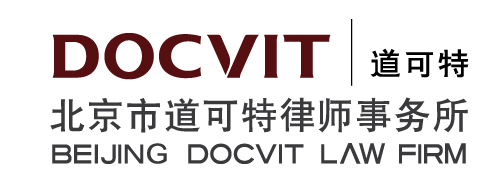To safeguard their interests in the enforcement process, creditors would normally take interim measures to preserve their assets before or during litigation. In order to further optimise the enforcement procedure, the “waiting sealing-up” system was established. However, there are constant controversies about how to apply the system in practice.

Associate
DOCVIT Law Firm
The effect of waiting sealing-up extends to the substitute for the sealed-up subject, and the creditors can claim a right over the price after the auction of the first sealing-up procedure. According to the Reply of the Supreme People’s Court on the Effectiveness of Waiting Sealing-up after Sealing- up all Subject Matters Disposed of by the Court, “Waiting sealing-up, detention and freezing take effect automatically when the prior sealing-up, detention and freezing are released. Therefore, after the court disposes of all the property that has been sealed up, detained and frozen, the waiting sealing-up on the property has not produced the effect of sealing-up, detention and freezing from the beginning. If the court auctions, sells or pays off the debt with the sealed up, detained or frozen property, the effect of the original sealing-up, detention and freezing will be eliminated, and the court may directly dispose of the property without first lifting the sealing-up, detention and freezing from the property, and the relevant units shall assist in handling the transfer procedures of the relevant property certificates.”
As this shows, the issue remains of whether or not the right of the creditor of waiting sealing-up will cease to exist after the property is disposed of by the court of first sealing-up. We can see that “waiting sealing-up” has not produced a preservation effect from the beginning. Once the court disposes of the property in whole, but not in part, the subject matter no longer exists and the physical preservation measures naturally cannot take effect. For the subject matter and its substitute that have not been fully executed in the first sealing-up procedure, the creditors of waiting sealing-up certainly have the right to claim their rights.
The Reconsideration Ruling on the Execution Case of Arrears Dispute between Chongqing Construction Residential Engineering and Chongqing Zhongjian Engineering Company, issued by the Supreme People’s Court (SPC), affirmed this view: “The function of the waiting sealing-up system is to ensure that the creditors of the waiting sealing-up can obtain the rest of the benefits obtained by the creditors of the prior sealing-up. The effect of waiting sealing-up should be extended to the substitute for the sealed-up subject – in other words, for the part of the price of the subject matter that exceeds the amount due to the creditor of the prior sealing-up, there is the effect of formal sealing-up, and the creditor of waiting sealing-up has the right to claim right on this part.”

Associate
DOCVIT Law Firm
When the court of first sealing-up procedure fails to dispose of the property within the time limit, the court of waiting sealing-up may request for a transfer of the disposal right. In practice, the property of the person subject to execution is often sealed up by multiple courts, or is subject to waiting sealing-up. When the first sealing-up and the waiting sealing-up are ordinary claims, and the court of first sealing-up procedure neglects to dispose of the subject property, or fails to dispose of the subject property within the time limit without justifiable reasons, many execution cases waiting for sealing up will be deadlocked, and the interests of creditors cannot be realised.
It is not uncommon for creditors of waiting sealing-up to constantly communicate with the court of first sealing-up, asking the court to execute the property or lift the measures of first sealing-up as soon as possible, while the actual execution power is still dominated by the court.
Article 21 of the Provisions of the Supreme People’s Court on Several Issues concerning the Handling of Property Preservation Cases by the People’s Courts stipulates: “If the court that gives the interim order has not disposed of the preserved property for more than one year after the sealing-up, detention or freezing of the assets, the execution court of waiting sealing-up may request a transfer of the preserved assets for execution, unless these are in dispute. However, if judicial interpretations specifically provide otherwise, its provisions shall apply.”
This shows that under the circumstance of the first sealing-up existing, despite the fact that the waiting sealing-up may not have the effect of preservation, it still has a certain urging effect on the execution by the court of the first sealing-up.
Creditors should consider the following measures to safeguard their rights:
(1) Keep a close eye on the target assets and proactively make a claim on the remainder from the earlier sealed-up subject.
(2) When the court of the first sealing-up is negligent in disposing of the preserved assets, creditors should actively communicate with the court of waiting sealing-up and request a transfer of disposal rights.
(3) If the executee is a citizen or other organisation, the creditors may apply for participation in the distribution process of the preserved assets after the commencement of the enforcement procedure, and before it ends.
(4) When the executee is a legal person of the enterprise, and is unable to settle its debts as they fall due, and clearly lacks the capacity to do so, the creditors can apply for the bankruptcy of that legal person during the execution proceedings.
Wang Yong and Luan Jia are associates at DOCVIT Law Firm

DOCVIT Law Firm
56/F Fortune Financial Center
No.5 East Third Ring MiddleRoad
Chaoyang District, Beijing 100020, China
Tel: +86 10 8586 1018
Fax: +86 10 8586 3605-8006
E-mail:





















